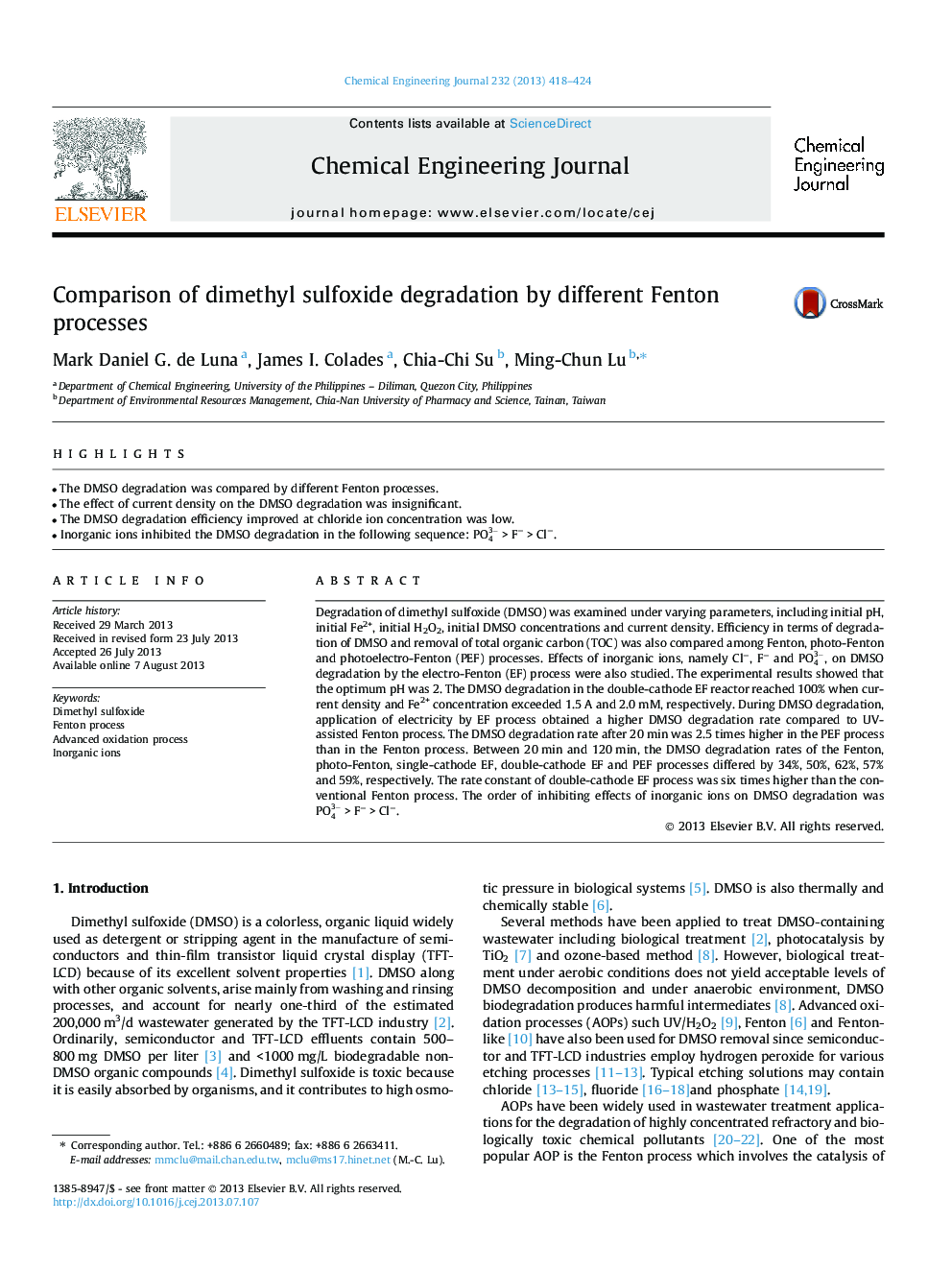| کد مقاله | کد نشریه | سال انتشار | مقاله انگلیسی | نسخه تمام متن |
|---|---|---|---|---|
| 148153 | 456406 | 2013 | 7 صفحه PDF | دانلود رایگان |

• The DMSO degradation was compared by different Fenton processes.
• The effect of current density on the DMSO degradation was insignificant.
• The DMSO degradation efficiency improved at chloride ion concentration was low.
• Inorganic ions inhibited the DMSO degradation in the following sequence: PO43- > F− > Cl−.
Degradation of dimethyl sulfoxide (DMSO) was examined under varying parameters, including initial pH, initial Fe2+, initial H2O2, initial DMSO concentrations and current density. Efficiency in terms of degradation of DMSO and removal of total organic carbon (TOC) was also compared among Fenton, photo-Fenton and photoelectro-Fenton (PEF) processes. Effects of inorganic ions, namely Cl−, F− and PO43-, on DMSO degradation by the electro-Fenton (EF) process were also studied. The experimental results showed that the optimum pH was 2. The DMSO degradation in the double-cathode EF reactor reached 100% when current density and Fe2+ concentration exceeded 1.5 A and 2.0 mM, respectively. During DMSO degradation, application of electricity by EF process obtained a higher DMSO degradation rate compared to UV-assisted Fenton process. The DMSO degradation rate after 20 min was 2.5 times higher in the PEF process than in the Fenton process. Between 20 min and 120 min, the DMSO degradation rates of the Fenton, photo-Fenton, single-cathode EF, double-cathode EF and PEF processes differed by 34%, 50%, 62%, 57% and 59%, respectively. The rate constant of double-cathode EF process was six times higher than the conventional Fenton process. The order of inhibiting effects of inorganic ions on DMSO degradation was PO43- > F− > Cl−.
Journal: Chemical Engineering Journal - Volume 232, October 2013, Pages 418–424